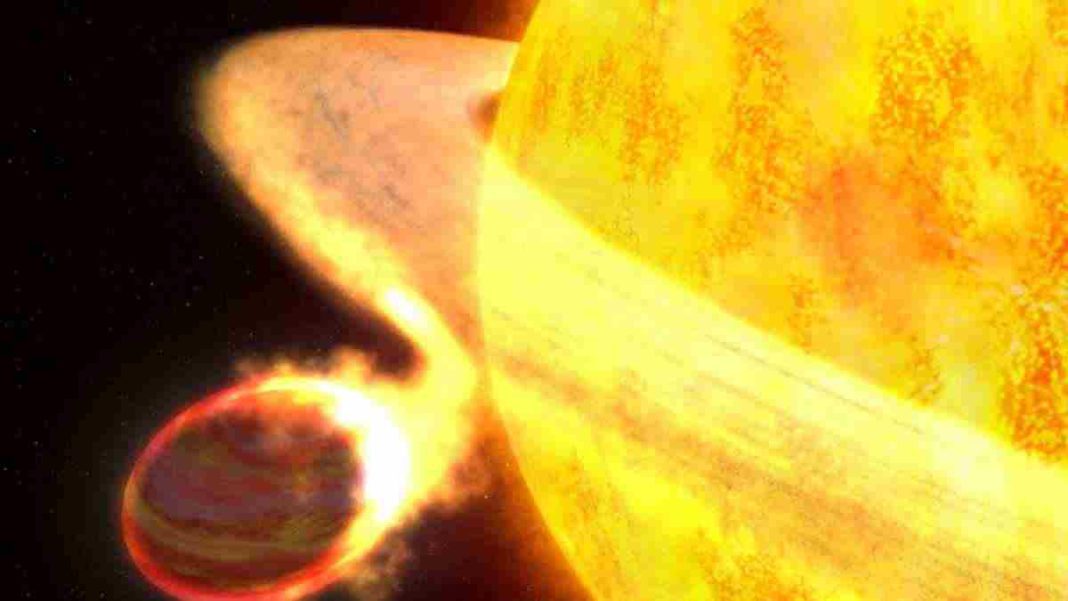UNITED STATES: Astronomers have made a groundbreaking discovery, catching a star in the act of consuming a planet for the first time ever. The event, which will happen in our own solar system in approximately five billion years, was captured by scientists at MIT, Harvard University, Caltech, and other institutions.
The ZTF SLRN-2020 star is around 10 billion years old and is located 15,000 light-years away in the constellation Aquila. As stars run out of fuel, they expand to millions of times their original size, engulfing any matter and planets in their path. While scientists have seen hints of stars consuming planets in the past, they have just witnessed it happening.
In a study published in Nature, the scientists described how they observed an outburst from a star some 12,000 light-years away, near the constellation Aquila. The star became more than 100 times brighter over ten days before fading away. The flash was followed by a colder, longer-lasting signal, which the scientists concluded could only have been created by a star consuming a nearby planet.
Lead author Kishalay De, a postdoc at MIT’s Kavli Institute for Astrophysics and Space Research, explained that the team was “seeing the end-stage of the swallowing.” The consumed planet was likely a hot, Jupiter-sized world that spiralled towards the dying star’s atmosphere and eventually into its core.
“The Earth will experience a similar fate in five billion years when the sun burns out, and the solar system’s inner planets are consumed. If some other civilizations watched us from 10,000 light-years away while the sun was engulfing the Earth, they would see the sun brighten suddenly as it ejects some material, then form dust around it, before it settled back to what it was,” he added.
The team discovered the outburst in May 2020 by searching through the Zwicky Transient Facility (ZTF) data, which analyzes the sky for rapidly changing stars. De found a star that brightened by a factor of 100 over a week, unlike any outburst he had seen before.
After analyzing observations of the same star taken by the Keck Observatory in Hawaii, the team found “peculiar molecules” that can only exist at freezing temperatures. The star continued to emit colder energy over the next year, suggesting it could be merging with another star rather than brightening due to a supernova explosion.
By combining the data with measurements taken by NASA’s infrared space telescope, NEOWISE, the team estimated the total amount of energy released by the star since its initial outburst and found it to be surprisingly small, further supporting the theory that it was consuming a planet. This discovery opens up a new field of study for scientists, allowing them to understand better how stars consume planets and their ultimate fates.
Also Read: NASA’s Voyager-2 Receives Boost to Continue Mission Until 2026



